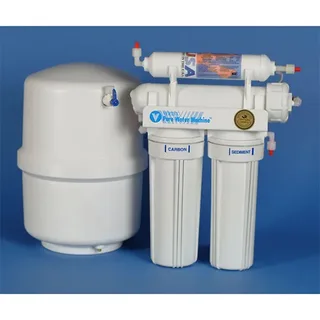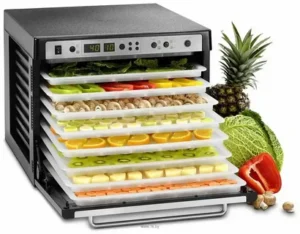The demand for clean and safe drinking water is more significant today. With pollutants and contaminants increasingly infiltrating our water sources, the need for an efficient water purifier plus filter system in households has become paramount. These devices employ advanced technologies to ensure our water is pure and healthy. This blog post delves into the science behind Water Filter Machine, highlighting 12 critical points elucidating their inner workings.
The Importance of Clean Drinking Water
Clean drinking water is fundamental to maintaining good health and overall well-being. It aids digestion, nutrient absorption, and detoxification processes within the body. Access to clean water can prevent waterborne diseases, such as cholera and dysentery, which can devastate individuals and communities. Additionally, water free from contaminants supports the proper functioning of vital organs and systems, including the kidneys and liver.
Given the myriad of pollutants that can compromise water quality—from industrial chemicals to microbial pathogens—investing in an effective water purifier plus filter system becomes an indispensable part of a healthy lifestyle. Furthermore, clean water is essential for cooking and personal hygiene, underscoring its role in daily life beyond just drinking.
Essential Components of a Water Purifier
A water purifier system comprises various essential components designed to target specific contaminants. The pre-filter is the first line of defence, removing larger particles such as sand, rust, and sediment. Following this, an activated carbon filter adsorbs chlorine, organic compounds, and other volatile organic compounds (VOCs), enhancing the taste and odour of the water.
The reverse osmosis (RO) membrane plays a critical role by eliminating dissolved solids, heavy metals, and certain bacteria. A UV light chamber is often integrated to neutralise any remaining microorganisms, ensuring microbiological safety. Finally, a post-filter may be included to catch residual impurities and polish the water before it reaches the tap. Each component works synergistically to provide clean, safe drinking water.
Types of Water Purification Technologies
Water purification technologies encompass a range of methods designed to tackle various contaminants. Reverse osmosis (RO) systems eliminate dissolved solids, heavy metals, and certain bacteria through a semi-permeable membrane. Ultraviolet (UV) purification employs UV rays to deactivate harmful microorganisms by disrupting their DNA. Activated carbon filtration is adept at adsorbing organic compounds, chlorine, and volatile organic compounds (VOCs), improving water’s taste and odour.
Ion exchange processes are beneficial for softening water by replacing calcium and magnesium ions with sodium or potassium ions. These technologies are often integrated into a single system to maximise purification efficacy and ensure comprehensive water treatment.
Reverse Osmosis (RO) Explained
Reverse osmosis (RO) is a popular and effective technology used in water purification systems. It is known for its ability to deliver clean, contaminant-free drinking water. Utilizing a semi-permeable membrane, RO systems filter out impurities, making them especially suitable for areas with high levels of dissolved minerals, heavy metals, and industrial pollutants.
How Reverse Osmosis Works
The reverse osmosis process involves pushing water through a semi-permeable membrane under pressure. This membrane has tiny pores that only allow water molecules to pass through, while contaminants like heavy metals, nitrates, and certain bacteria are trapped and flushed away. The result is highly purified water that is safe and clean.
Multi-Stage Filtration Process
Most RO systems feature a multi-stage filtration process, with pre-filters and post-filters to enhance effectiveness. Pre-filters capture larger particles, such as sediment and chlorine, which could damage the membrane. At the same time, post-filters further polish the water, improving taste and ensuring any residual impurities are removed. This layered approach makes RO systems highly reliable for producing purified water.
Ideal for Areas with High Contamination
RO systems are beneficial in regions with high dissolved solids or industrial pollutants. By reducing contaminants to minimal levels, these systems offer additional protection against pollutants that other purification methods might not address as thoroughly.
In summary, reverse osmosis technology provides a robust solution for household water purification. It delivers consistently safe drinking water by targeting a wide range of contaminants through an efficient, multi-layered filtration process.
The Role of UV Light in Water Purification
UV light purification employs ultraviolet rays to target and deactivate bacteria, viruses, and other microorganisms in water. By disrupting their DNA, UV light prevents these pathogens from replicating and causing infections. This method is highly effective for ensuring microbiological safety and is often used with other purification technologies.
UV systems typically feature a UV lamp housed in a chamber through which water flows, exposing any microorganisms to germicidal wavelengths. Unlike chemical treatments, UV purification does not alter the taste or smell of water or add any substances to it. This makes UV light an attractive option for households that maintain water purity without chemicals.
Activated Carbon Filtration
They have activated carbon filters by adsorbing organic compounds, chlorine, and volatile organic compounds (VOCs) from the water. The highly porous nature of activated carbon provides a large surface area for these impurities to adhere to, effectively trapping them and improving the overall quality of the water. This process not only enhances the taste and odour of the water but also removes potential health hazards associated with chemical contaminants.
Activated carbon is particularly effective at targeting smaller molecular pollutants that may pass through other filtration stages, offering an additional purification layer. These filters are often combined with different technologies to ensure comprehensive water treatment, maximising the efficacy of the water purifier plus filter system in delivering safe, clean drinking water.
Importance of Pre-Filtration
Pre-filtration is the initial barrier in a water purifier plus filter system, capturing larger particles like sand, rust, and sediment. This stage is vital for protecting subsequent filters and purification technologies from premature clogging and damage, thereby enhancing the overall efficiency and lifespan of the system.
By removing these coarse impurities early on, pre-filtration ensures that the more delicate components, such as activated carbon filters and RO membranes, can focus on eliminating finer contaminants. This foundational step is crucial for maintaining the consistent performance of the entire water purification process, ensuring the delivery of clean, safe drinking water to your household.
Maintenance of Water Purifier Filter
Regular upkeep of water purifiers is crucial for ensuring they function optimally. This involves periodically replacing filters to prevent them from becoming clogged with contaminants, which can hinder performance. Cleaning components such as the pre-filter and activated carbon filter is essential to maintain their efficacy in removing impurities. Additionally, inspecting and sanitising the system helps prevent harmful microorganisms’ growth.
Following the manufacturer’s guidelines for maintenance schedules and procedures will help extend the lifespan of the Water Purifier Filter. In areas with hard water or high levels of pollutants, more frequent maintenance may be required to keep the system operating efficiently. Neglecting these tasks can lead to reduced water quality and increased strain on the purification system, ultimately compromising the safety of your drinking water.
The Impact of Water Quality on Filtration
The quality of input water plays a crucial role in the performance of a water purifier plus filter system. High contaminants like heavy metals, chlorine, and microbial pathogens can challenge the efficacy of filtration technologies such as activated carbon filters and reverse osmosis membranes. Hard water, characterised by high mineral content, can cause scale build-up, affecting the lifespan and functionality of the purifier.
To address these issues, additional pre-filtration steps or specialised filters may be required, tailored to the specific contaminants present in the water source. Understanding the local water quality helps you select and maintain the most suitable purification system for your household.
Energy Consumption and Efficiency of House Water Filter
House water purifiers vary in energy consumption depending on the technologies they employ. Reverse osmosis (RO) systems and UV purifiers generally require more electricity due to the pressure needed for the RO process and the operation of UV lamps. However, modern units are designed to be energy-efficient, incorporating advanced features like auto-shutoff and low-energy consumption modes.
Regular maintenance of House Water Filter can also improve energy efficiency, ensuring that filters and membranes are clean and functioning correctly. While some systems might have higher initial energy usage, the benefits of providing clean and safe water often outweigh these costs, especially when compared to the environmental and financial burden of alternatives like bottled water.
Cost Analysis: Initial Investment vs Long-Term Savings
While the initial cost of a water purifier plus filter system can be high, the long-term savings are considerable. Eliminating the need for bottled water reduces recurring expenses and contributes to environmental sustainability. Additionally, the health benefits of consuming purified water can lead to fewer medical costs related to waterborne illnesses.
Over time, reducing the purchase of single-use plastics also presents significant financial savings. Although an added cost, regular maintenance ensures the system functions efficiently, further extending its lifespan and value. Investing in a reliable water purifier ultimately offers financial and health benefits, making it a prudent choice for households.
Environmental Impact
House water purifiers can significantly reduce plastic waste by eliminating the need for bottled water, thus supporting environmental sustainability. However, properly disposing of used filters and components must be given attention. Many modern purification systems incorporate recyclable materials, making it easier to mitigate environmental harm. By adhering to recommended disposal guidelines and exploring recycling options, households can ensure that their water purification practices remain eco-friendly.
The reduced carbon footprint associated with decreased bottled water production and transportation further enhances the environmental benefits. In addition, some advanced systems are designed to be energy-efficient, reducing overall energy consumption and lessening their environmental impact.
Conclusion
In a world where access to clean drinking water is paramount, investing in a reliable Water Filter Machine system is more than just a convenience—it’s a commitment to health, sustainability, and overall well-being. The science behind these purifiers is sophisticated, employing various technologies such as reverse osmosis, activated carbon filtration, UV purification, and more to deliver safe water. Each component plays a vital role in removing contaminants and improving water quality, from pre-filters to UV light chambers. By understanding the principles and maintenance involved, homeowners can make informed decisions that offer long-term benefits and peace of mind.
Frequently Asked Questions (FAQs)
What is the main difference between a water purifier and a filter?
A water filter typically removes larger particles, sediment, and some contaminants like chlorine and odors, primarily through physical filtration or activated carbon. A water purifier, on the other hand, often includes additional technologies like reverse osmosis (RO) or ultraviolet (UV) light to remove a broader range of contaminants, including bacteria, viruses, heavy metals, and dissolved solids, resulting in cleaner and safer drinking water.
How often should I replace the filters in my Water Filter Machine?
Filter replacement frequency depends on the type of Water Filter Machine and the level of contaminants in your water source. Pre-filters and activated carbon filters typically need to be replaced every 6-12 months, while RO membranes can last 2-3 years. Regular maintenance, as per the manufacturer’s guidelines, is essential to keep the system functioning optimally and ensure water quality.
Is UV light purification safe, and does it alter the water?
Yes, UV light purification is safe and does not chemically alter the water or add any substances. The UV light deactivates harmful microorganisms by damaging their DNA, rendering them unable to replicate. This method is effective for microbiological safety, offering a chemical-free approach to eliminate bacteria and viruses.
What are the energy requirements for an RO or UV water purifier?
RO and UV water purifiers do consume electricity, primarily due to the pressure needed for the RO process and the UV light operation. However, modern systems are designed to be energy-efficient. Many units include features such as auto-shutoff and low-energy consumption modes to reduce energy use. The exact energy requirements vary by model and usage.
How environmentally friendly are household water purifiers?
Household water purifiers are generally environmentally friendly, especially when compared to the use of bottled water, which contributes to plastic waste. Proper disposal of used filters, as well as recycling components, can further enhance eco-friendliness. Additionally, energy-efficient models reduce electricity usage, supporting a more sustainable choice for safe drinking water.




